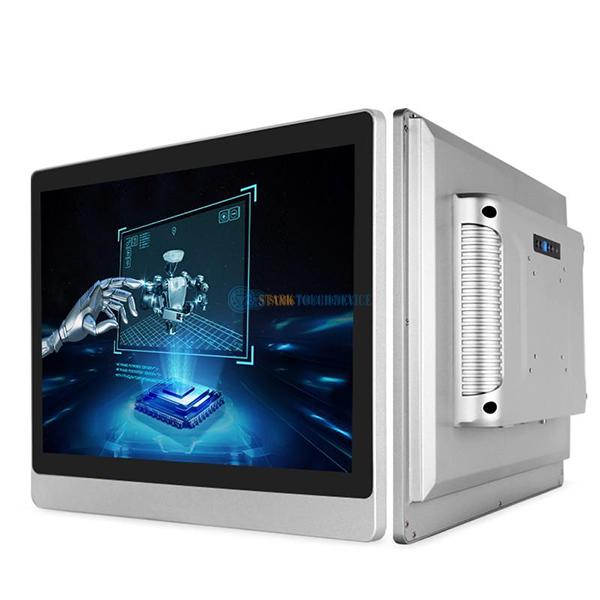Welcome STARK TOUCH DEVICE!
Solutions
Cleaning tips for keyboard gaps in industrial control computers
Effective Techniques for Cleaning Industrial Control Computer Keyboard Gaps
Industrial control computer keyboards are often exposed to harsh environments, including dust, grease, and even chemical contaminants. Over time, these substances can accumulate in the keyboard gaps, affecting performance and potentially causing malfunctions. Proper cleaning techniques are essential to maintain the functionality and longevity of these keyboards.

Basic Cleaning Methods for Keyboard Surfaces and Gaps
Soft Brush for Surface Dust Removal
A soft-bristled brush, such as an artist's brush or a makeup brush, is an ideal tool for gently sweeping away loose dust from the keyboard surface and gaps. Hold the brush at a slight angle and use light, short strokes to avoid applying excessive pressure. Pay special attention to the edges and corners of the keyboard, as dust tends to accumulate in these areas. This method is simple yet effective for routine maintenance.
Compressed Air for Deep Gap Cleaning
Using a can of compressed air or a low-pressure air blower is an excellent way to dislodge stubborn dust and debris from deep within the keyboard gaps. Hold the nozzle of the compressed air canister at least 10 cm away from the keyboard to prevent moisture buildup. Release short bursts of air, moving the nozzle around the keyboard to ensure all gaps are cleaned. If using an air blower, set it to a low pressure to avoid damaging the keyboard.
Microfiber Cloth for Wiping Down Surfaces
After removing loose dust with a brush and compressed air, use a clean, lint-free microfiber cloth to wipe down the keyboard surface. For more thorough cleaning, dampen the cloth slightly with isopropyl alcohol (70% concentration or higher). However, be cautious not to use excessive alcohol, as it can seep into the keyboard and cause damage. Wipe the surface in a single direction to prevent spreading dust or debris.
Advanced Cleaning Techniques for Stubborn Dirt and Grime
Keyboard Cleaning Gel for Trapped Debris
Keyboard cleaning gel, a sticky substance designed specifically for cleaning electronic devices, can effectively remove dust, hair, and food particles trapped in the keyboard gaps. Simply press the gel onto the keyboard surface, ensuring it fills the gaps, and then gently pull it away. The gel will adhere to the debris, leaving the keyboard clean. This method is particularly useful for areas that are difficult to reach with a brush or cloth.
Cotton Swabs for Precision Cleaning
For small gaps and hard-to-reach areas, cotton swabs dipped in a small amount of isopropyl alcohol can provide precise cleaning. Gently insert the cotton swab into the gap and rotate it to dislodge and remove dirt. Be careful not to apply too much pressure, as this could damage the keyboard components. This method is ideal for cleaning around the edges of keys and in between tight spaces.
Disassembly for Thorough Internal Cleaning
For industrial control computer keyboards with removable keycaps, disassembly can provide a thorough cleaning of internal components. Use a keycap puller or a small tool like a tweezers to carefully remove the keycaps. Place the keycaps in a container to avoid losing them. Once the keycaps are removed, use a brush and compressed air to clean the underlying surface and gaps. If necessary, dampen a cloth slightly with alcohol to wipe down the internal components, but ensure they are completely dry before reassembling the keyboard.
Preventive Measures to Reduce Dust Accumulation
Keyboard Covers for Protection
Using a keyboard cover is an effective way to prevent dust, liquid, and food particles from entering the keyboard gaps. Choose a transparent cover that fits snugly over the keyboard to maintain visibility and usability. Regularly clean the cover to prevent the buildup of dirt and grime.
Regular Cleaning Schedule
Establishing a regular cleaning schedule can help prevent excessive dust accumulation. Depending on the operating environment, clean the keyboard gaps every 1-3 months. In dusty industrial settings, more frequent cleaning may be necessary. Regular maintenance can extend the lifespan of the keyboard and reduce the risk of malfunctions.
Clean Work Environment
Maintaining a clean work environment is crucial for reducing dust accumulation on industrial control computer keyboards. Regularly clean the workspace, including the computer desk and surrounding areas, to minimize the amount of dust in the air. Use air filters or dust collectors to further reduce airborne particles.


